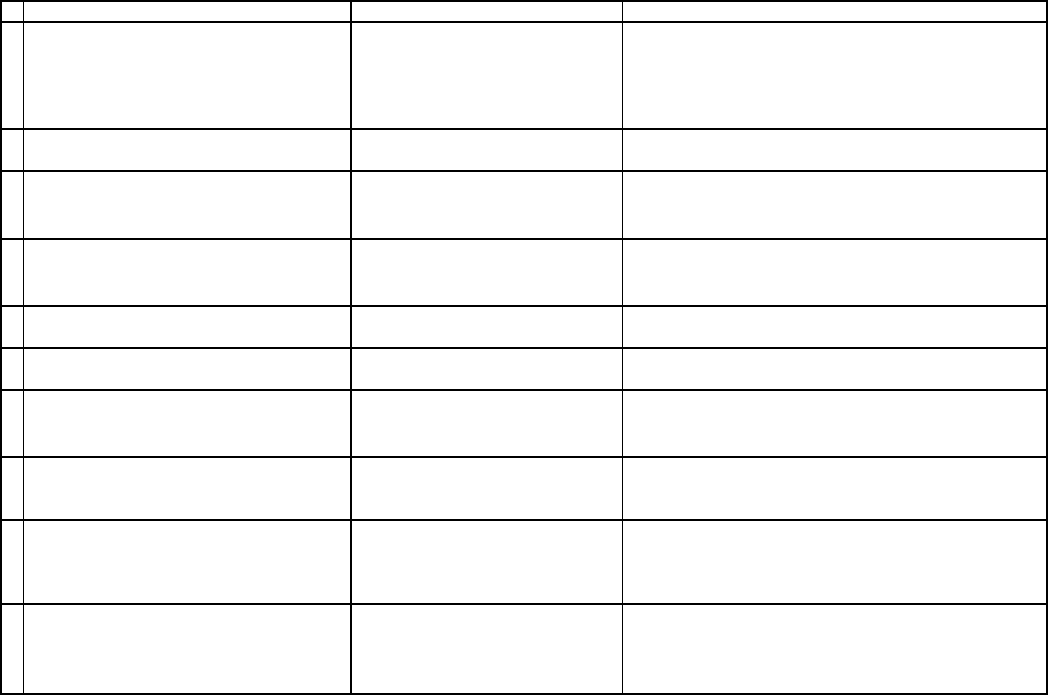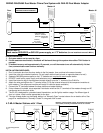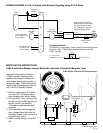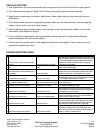
Aiphone Communication Systems
1700 130th Ave. N.E.
Bellevue, WA 98005
(425) 455-0510
FAX (425) 455-0071
Toll Free Technical Support:
(800) 692-0200
E-mail tech-serv@aiphone.com
Pg. 4
C-123LW Supp Instr.
#90102
0906JS
TROUBLESHOOTING GUIDE:
INSTALLATION TIPS:
1. Use shielded wire for the communication path, and ground one end of the shield to an earth ground.
2. Run intercom wire at least 20" away from AC wiring, fluorescent lights or dimmer switches.
3. Keep intercom cable away from alarm, data, phone, video cables, and any other potential source of
interference.
4. Door release wires must be in a separately jacketed cable from the intercom wires. Use two separate
cables; one for audio and one for door release.
5. When installing a second master station, wire must be run from the first master station, not from the
door station. See diagram on page 2.
6. Do not install the master station near light switches, dimmer switches, or other devices that may
cause interference with the intercom system.
7. Do not install the master station on the opposite wall from the door station. If the units are too close,
acoustical feedback may result.
# PROBLEM POSSIBLE CAUSE SOLUTION
1
No call in from door to master, but communication
works fine. Reversed DAK-2S component module.
When door calls in, it shorts the # 1 terminal to the E terminal. If the
DAK-2S is installed backwards the chime from the door call-in will not
be heard. Install the DAK-2S component module with the bare wire
end under the 1 terminal, and the door station 1 wire tied to the
colored wire end of the DAK-2S.
2
When the talk button is pressed, the other master
rings.
Missing or reversed DAK-2S component
module.
Install the DAK-2S component module as described above and
shown on dual master instructions.
3
When the talk button is pressed, feedback is heard
at both masters. Common power supply.
If both C-ML/A's share the same power supply, a ground loop
feedback will occur when the talk button is pushed. Install separate
SKK-620's for each master, or install batteries in each master.
4 Unit appears dead; no functionality. Terminals 1 and - crossed.
"+ / -" are on left column, "E / 1" are on right column. If swapped, unit
will appear dead. Verify that 1 wire from the door station is connected
to 1, and negative of power supply is connected to -.
5 System squeals and batteries get hot. Power supply and batteries both installed.
Take batteries out of the master station. Both power sources cannot
be used simultaneously.
6 Chime tone sounds weak, lower frequency. Weak batteries or low voltage.
If batteries installed, replace them. If power supply, check for 6V DC.
If low, install new SKK-620 power supply.
7 Master stays on; does not time out. Incorrect cable being used.
If the resistance of the wire is too great, usually from exceeding
distance limitations, the master may not time out as designed. Refer
to wire specifications in the instructions.
8 Voice volume is too loud or too soft. Volume control not adjusted properly.
Remove front cover of C-ML/A and locate volume potentiometer
through hole at the bottom of the unit. Use a small screwdriver to
adjust the volume, clockwise to increase.
9 Chime tone volume is too loud. Standard volume level.
There is not a separate call tone volume adjustment on the C-ML/A,
so the volume level cannot be altered. Surface mount component
level modification would be required, which is not practical.
10 RY-AC external signaling relay not working. Missing or wrong connection.
Make sure the negative from the 12V DC supply for the RY-AC is
connected to the negative of the C-ML/A master. Make sure the
WHITE wire of the RY-AC is connected to the DAK-2S component
module to 1 terminal, not negative terminal.






